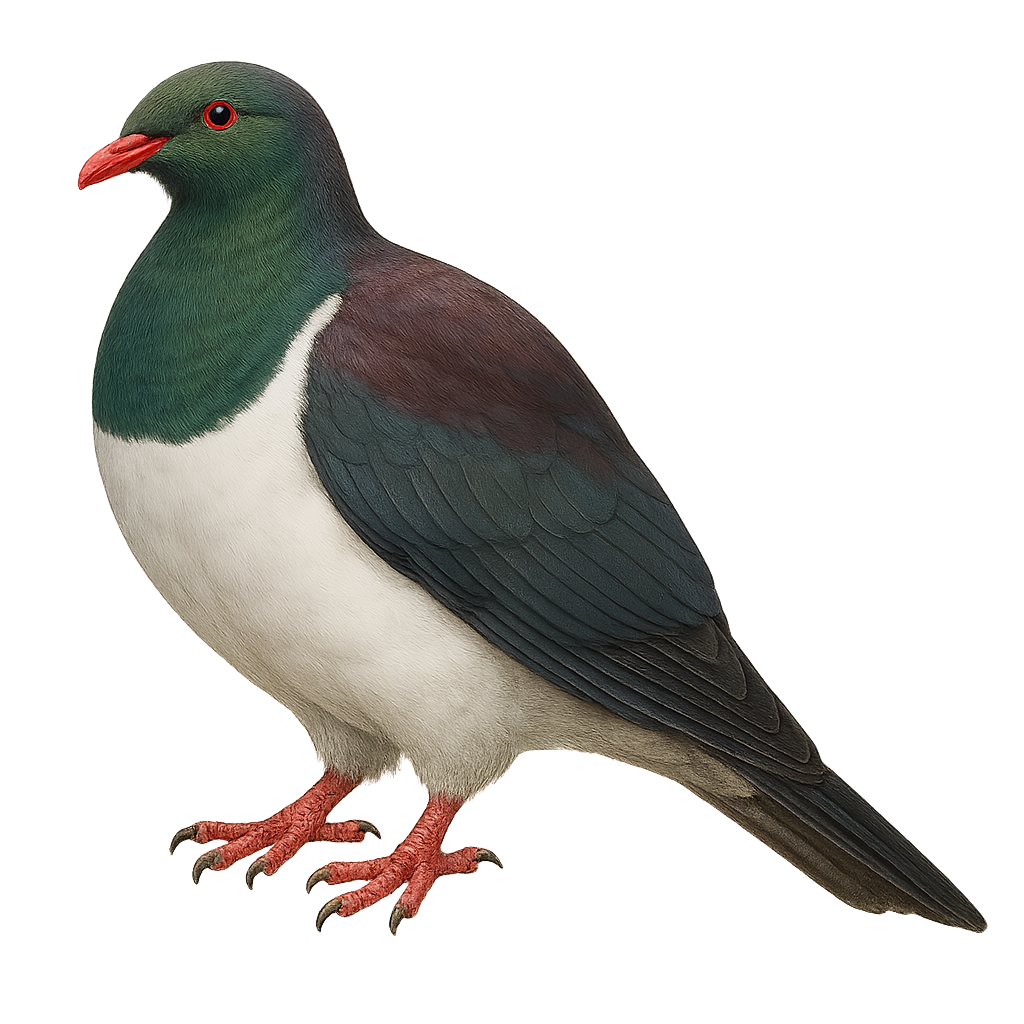Your wildlife photography guide.
Explore the new zealand pigeon in detail, study its behavior, prepare your shots.
Where to observe and photograph the new zealand pigeon in the wild
Learn where and when to spot the new zealand pigeon in the wild, how to identify the species based on distinctive features, and what natural environments it inhabits. The WildlifePhotographer app offers tailored photography tips that reflect the new zealand pigeon’s behavior, helping you capture better wildlife images. Explore the full species profile for key information including description, habitat, active periods, and approach techniques.
New Zealand Pigeon
Scientific name: Hemiphaga novaeseelandiae

IUCN Status: Least Concern
Family: COLUMBIDAE
Group: Birds
Sensitivity to human approach: Suspicious
Minimum approach distance: 10 m
Courtship display: September to November
Incubation: 28-30 jours
Hatchings: October to December
Habitat:
Native forests, parks, urban gardens
Activity period :
Mainly active at night, generally discreet during the day.
Identification and description:
The kereru, or New Zealand pigeon, is an endemic bird of New Zealand, known for its iridescent plumage and large size. It features a dark green head and neck, a white belly, and metallic sheen on its back. Measuring about 50 cm in length, it is often seen in native forests, parks, and urban gardens. The kereru plays a crucial role in seed dispersal, aiding forest regeneration. Although its flight is powerful, it is often described as clumsy, making it easily identifiable. Its population is stable, but it remains vulnerable to introduced predators and habitat loss.
Recommended lens:
400 mm – adjust based on distance, desired framing (portrait or habitat), and approach conditions.
Photography tips:
To photograph the kereru, it is advisable to use a 400mm lens or longer to capture precise details of its iridescent plumage. Look for it in native forests or urban parks, where it often feeds on fruits. Be patient and discreet, as although it is suspicious, it can be observed closely if you remain still. Take advantage of the natural morning light to achieve vibrant colors and good contrast.
The WildlifePhotographer App is coming soon!
Be the first to explore the best nature spots, track rutting seasons, log your observations, and observe more wildlife.
Already 1 432 wildlife lovers subscribed worldwide

